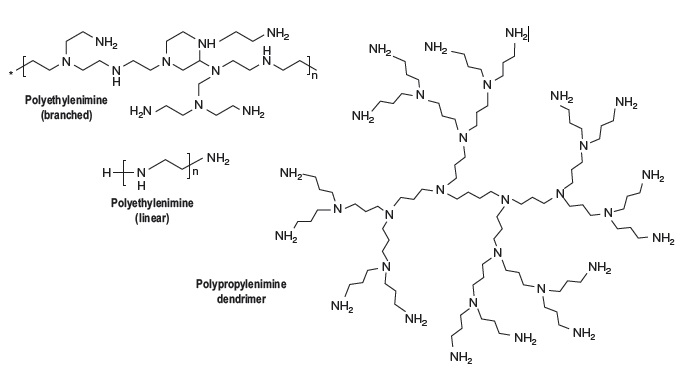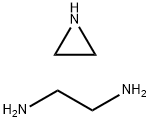Polyethylenimine (PEI) is a polycationic molecule that has been shown to produce efficient gene transfection in numerous cell lines in vitro without the need for an endo- somolytic agent (Fig. 1). Every third atom of PEI is a nitrogen atom, leading to a densely positively charged backbone necessary for an efficacious DNA binding. PEI enhances the cellular endocytosis of plasmids but also facil-itates their endosomal escape by buffering the endosomal compartments, leading to lysosomal osmotic swelling and disruption. Although PEI is an efficient gene transfer polymer in vitro, its cytotoxicity needs to be improved for widening its use in vivo. Used as a polyelectrolyte multilayer on charged surfaces to provide a biocompatible coating on surfaces.

Fig. 1 Chemical structure of polymers used for gene delivery.

